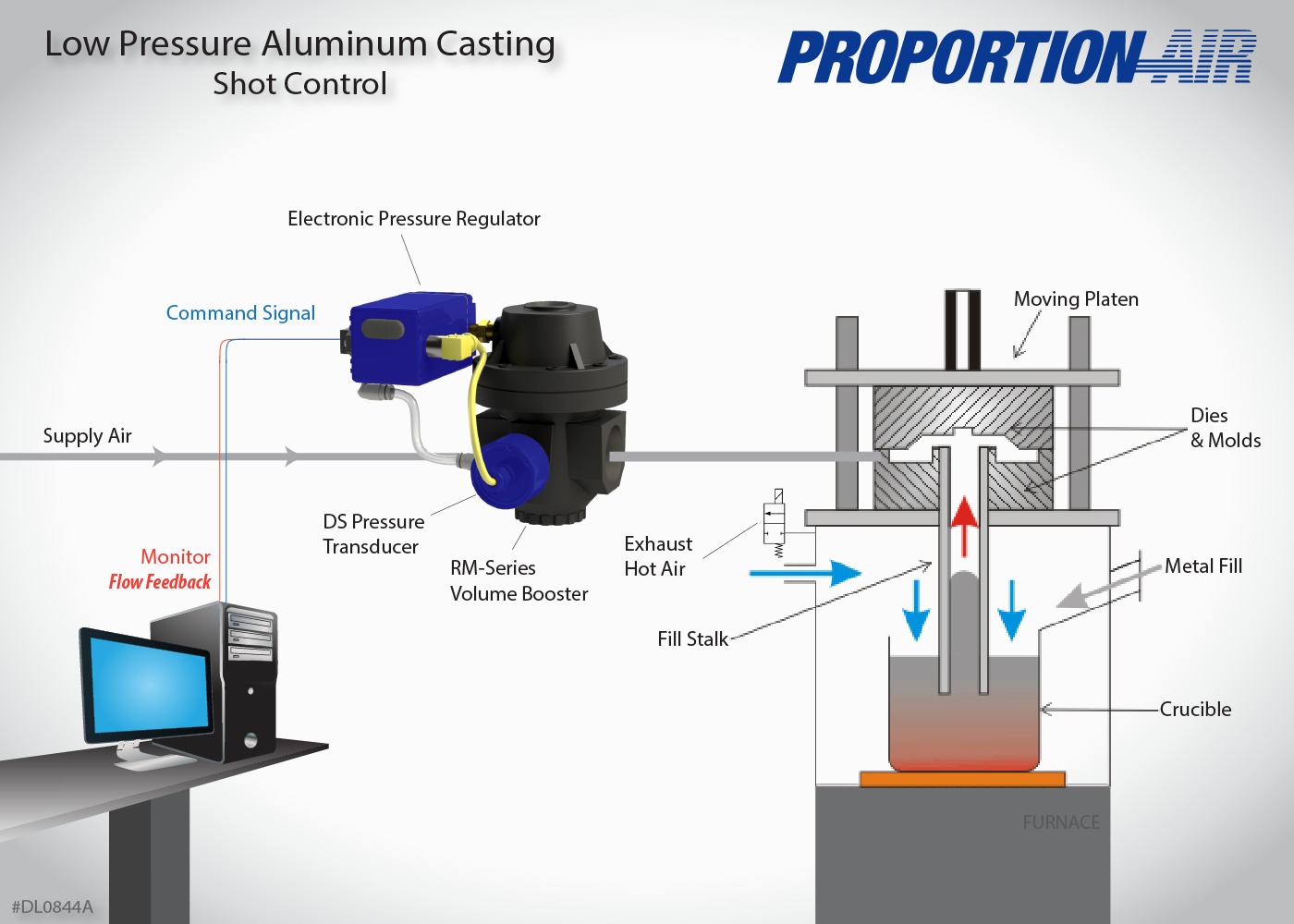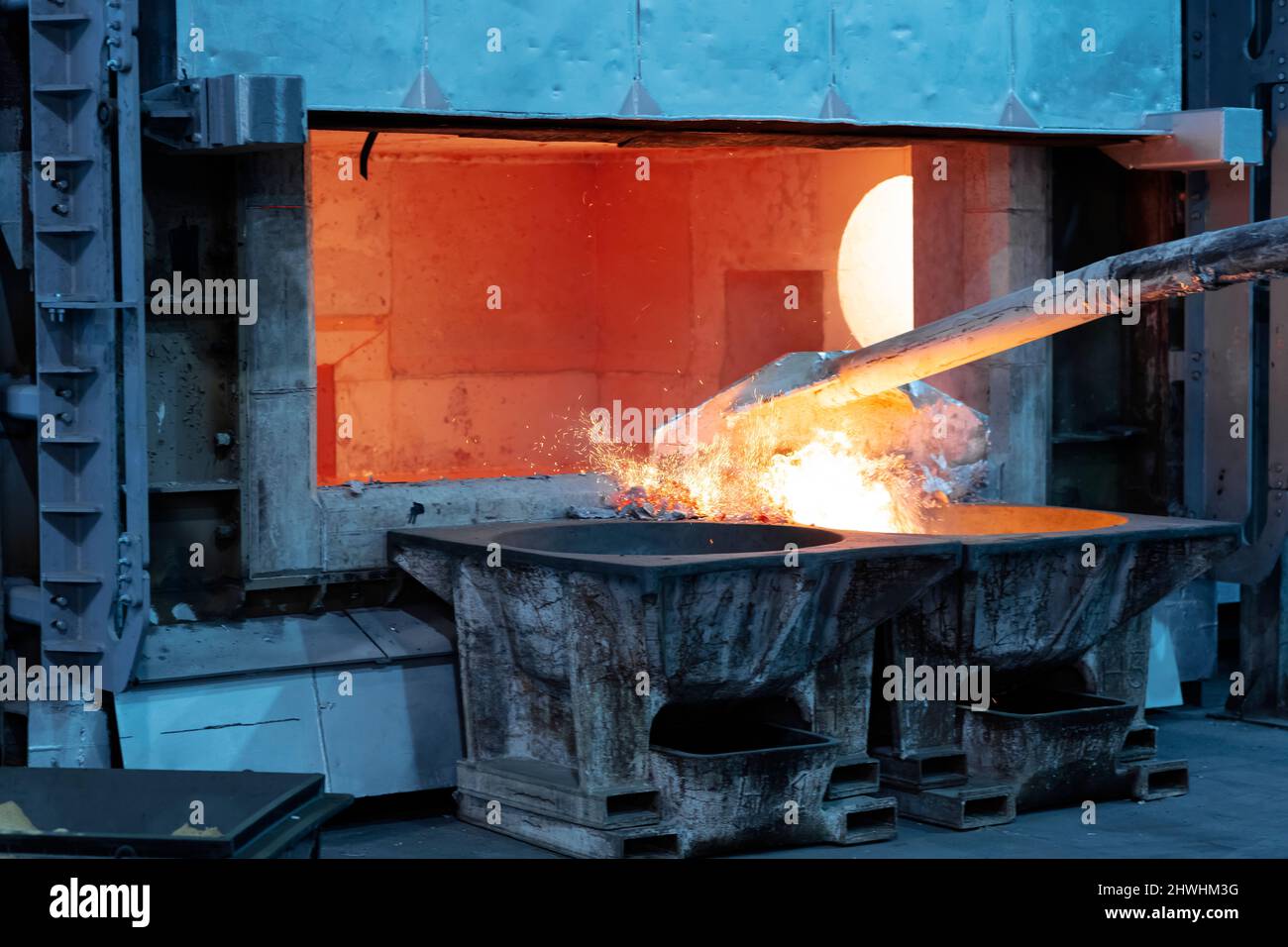Understand how Aluminum Foundry Wisconsin helps create better casting outcomes
Exactly How Aluminum Foundry Contributes to Developments in Aerospace Design
Aluminum shops are indispensable to advancements in aerospace design. They create lightweight, high-strength parts that are necessary for modern-day airplane. With advanced spreading methods, these foundries develop complex geometries that boost architectural stability. Furthermore, the growth of remarkable Aluminum alloys sustains the market's concentrate on fuel effectiveness and sustainability. Obstacles remain in the production process. Recognizing these aspects reveals the profound influence of Aluminum on air travel's future.
The Value of Lightweight Products in Aerospace Layout
As the aerospace industry continues to advance, the relevance of light-weight materials ends up being increasingly obvious. The need for effectiveness and sustainability drives designers to focus on using products that lower general weight without endangering architectural integrity. Lightweight products, specifically Aluminum, play a crucial role in improving gas performance, improving payload ability, and enhancing the total efficiency of airplane.
Additionally, the assimilation of these products allows for innovative styles, allowing producers to develop even more wind resistant forms that can endure extreme conditions. The decrease in weight not just decreases functional expenses however additionally adds to a reduced ecological footprint, lining up with global efforts towards sustainability in aeronautics.
Advanced Spreading Techniques in Aluminum Foundries
Advanced casting strategies in Aluminum shops play an essential function in aerospace engineering by enabling the manufacturing of light-weight and specific parts. Technologies in mold and mildew layout and precision casting processes are crucial in achieving ideal performance and structural honesty. Additionally, the advancement of light-weight alloys enhances the general effectiveness and effectiveness of aerospace applications.
Innovative Mold And Mildew Design
Cutting-edge mold style plays a necessary function in the performance and efficiency of Aluminum foundries, specifically within the aerospace industry. By leveraging sophisticated materials and strategies, contemporary mold and mildews can be engineered to withstand high temperature levels and stress, making sure peak performance throughout the casting procedure. These designs commonly incorporate intricate geometries that permit the manufacturing of lightweight yet structurally audio parts, necessary for aerospace applications. Additionally, the usage of computer-aided style (CAD) software facilitates exact modeling, allowing foundries to replicate and improve mold styles prior to physical manufacturing begins. This not only boosts the quality of actors components but additionally reduces waste and lead times, bring about significant price financial savings. Overall, cutting-edge mold design is a foundation of progression in Aluminum Foundry technology for aerospace engineering.
Precision Casting Procedures
The effectiveness of cutting-edge mold and mildew designs perfectly incorporates with precision casting processes, which are crucial for producing top notch Aluminum parts in aerospace engineering. These processes, including sand casting, pass away spreading, and financial investment casting, guarantee the development of intricate geometries with limited tolerances. Advanced techniques like vacuum spreading and stress pass away casting enhance the integrity and surface finish of the end products. Accuracy spreading minimizes product waste while making best use of the mechanical buildings of Aluminum, essential for aerospace applications. In enhancement, employing real-time monitoring and advanced simulation tools during the spreading procedure enables instant modifications, causing enhanced high quality control. Jointly, these accuracy casting processes placement Aluminum shops at the forefront of aerospace innovation, supporting the industry's need for integrity and efficiency.
Light-weight Alloy Growth
As aerospace engineers look for to improve fuel effectiveness and efficiency, light-weight alloy growth ends up being a necessary focus in Aluminum shops. These factories utilize advanced spreading strategies to develop alloys that give premium strength-to-weight proportions. Technologies in alloy structure, including the unification of aspects like lithium and magnesium, enable the manufacturing of materials that endure severe conditions while reducing general aircraft weight. Strategies such as die casting and investment spreading assist in the precision production of complex forms, which are important for aerospace applications. In addition, recurring research study aims to optimize these alloys for improved mechanical residential properties and raised durability. By focusing on light-weight alloy growth, Aluminum shops considerably add to the development of aerospace design, leading the way for extra effective and lasting airplane designs.

Enhancing Structural Stability Via Aluminum Components
Aluminum elements provide substantial benefits in enhancing architectural honesty within aerospace engineering. Their lightweight nature contributes to general effectiveness while keeping toughness, which is vital for aircraft performance. Furthermore, the anxiety resistance residential or commercial properties of Aluminum help guarantee the durability and reliability of aerospace structures under various operational conditions.
Lightweight Material Benefits
While typical products commonly jeopardize weight for strength, utilizing Aluminum parts in aerospace design supplies considerable advantages in architectural honesty. Aluminum's light-weight nature adds to overall design efficiency, enabling even more streamlined airplane that take in less gas, thus enhancing sustainability. The material's exceptional strength-to-weight ratio warranties that components preserve sturdiness without adding unneeded mass. This top quality promotes boosted performance and dexterity in flight, along with enhanced haul capabilities. Furthermore, Aluminum's resistance to corrosion extends the lifespan of aerospace frameworks, decreasing upkeep expenses and enhancing security. As producers significantly embrace Aluminum alloys, the aerospace industry experiences a transformative change towards extra reliable and effective engineering solutions that focus on both performance and environmental obligation.
Tension Resistance Properties
Although different materials have one-of-a-kind properties, Aluminum's phenomenal tension resistance attracts attention as an important consider boosting the structural stability of aerospace parts. This resistance plays an essential role in making sure that airplane can hold up against various operational anxieties, consisting of exhaustion, influence, and ecological problems. Aluminum alloys, specifically crafted for aerospace applications, exhibit high tensile strength while preserving lightweight attributes, making it possible for engineers to develop a lot more effective frameworks - Aluminum Foundry. Additionally, the capacity of Aluminum to sustain cyclic loading without substantial contortion adds to the long life and reliability of aerospace parts. As improvements proceed in Aluminum Foundry methods, the advancement of stress-resistant Aluminum elements guarantees additional enhancements in performance, safety and security, and performance across the aerospace market, solidifying Aluminum's role as a preferred material in modern-day engineering
Fuel Efficiency Improvements Driven by Aluminum Innovations
As the aerospace industry looks for to boost gas efficiency, cutting-edge uses of Aluminum have become an important option. Aluminum's light-weight nature notably minimizes aircraft weight, permitting reduced fuel intake throughout flight. This decrease in weight is essential, as his explanation even small decreases can lead to significant enhancements in general fuel economic situation.
Advanced Aluminum alloys, designed for improved strength and durability, make it possible for suppliers to produce components that maintain architectural honesty while minimizing mass - Aluminum Foundry. Additionally, the assimilation of Aluminum in airframes and engine components promotes enhanced the rules of aerodynamics, adding to reduced drag and boosted efficiency
The fostering of Aluminum in aerospace not just satisfies the need for fuel-efficient design yet likewise aligns with governing pressures for reduced exhausts. As these technologies proceed to advance, they play a significant role in setting brand-new criteria for gas performance, making sure that the aerospace industry can meet growing ecological and economic challenges.

The Duty of Aluminum in Sustainable Aviation Practices
The enhancing emphasis on lasting aeronautics methods has positioned Aluminum as an essential material in the quest for greener aircraft design. Understood for its light-weight residential properties, Aluminum substantially reduces aircraft weight, resulting in lower fuel usage and exhausts. Its recyclability better boosts its sustainability profile, as Aluminum can be reused indefinitely without loss of quality. This particular sustains a round economic situation within the aeronautics industry, reducing waste and resource deficiency.
Developments in Aluminum alloys have enhanced their strength and corrosion resistance, permitting for longer service life and reduced upkeep demands. These technologies assist in the development of extra reliable aircraft frameworks, adding to overall sustainability initiatives. Furthermore, Aluminum's thermal conductivity plays a critical function in energy-efficient layouts, improving systems such as heat exchangers. Jointly, these characteristics emphasize Aluminum's essential role ahead of time sustainable aeronautics, straightening with global campaigns aimed at decreasing the ecological impact of flight.
Challenges Dealt With by Aluminum Foundries in Aerospace Production
While Aluminum factories play an essential duty in aerospace manufacturing, they deal with significant difficulties that can influence production effectiveness and quality. One significant challenge is the rigorous quality control criteria required in the aerospace sector. Any type of published here defect can jeopardize safety and security and performance, necessitating extensive assessment processes that prolong manufacturing timelines. Furthermore, foundries usually contend with varying basic material prices, which can affect prices and success. The intricacy of Aluminum alloys made use of in aerospace applications more complicates the manufacturing procedure, as specific formulas are vital for attaining desired mechanical residential or commercial properties. Experienced labor lacks impede the capacity to maintain top quality manufacturing levels. Finally, environmental laws enforce restrictions on discharges and waste management, requiring foundries to spend in lasting methods, which can be cost-prohibitive. These variables jointly develop a landscape where Aluminum shops have to continuously adapt to satisfy the developing demands of aerospace manufacturing while guaranteeing safety and security and conformity.
Future Trends in Aluminum Applications for Aerospace Design
With developments in modern technology and increasing needs for efficiency, the future of Aluminum applications in aerospace engineering is positioned for significant transformation. The assimilation of ingenious Aluminum alloys and composites is anticipated to improve strength-to-weight ratios, bring about more fuel-efficient airplane styles. Furthermore, improvements in additive manufacturing strategies will certainly allow for the manufacturing of complicated Aluminum frameworks that were previously impossible, maximizing performance and reducing waste.

Lasting practices will play an essential role, with a growing focus on reusing Aluminum to minimize environmental effect. The aerospace field is likely to accept smarter producing processes, such as automation and expert system, ensuring higher quality and precision in Aluminum elements. In addition, collaborations between Aluminum foundries and aerospace companies will promote r & d, leading the means for brand-new applications that fulfill the stringent demands of modern aerospace engineering - Aluminum Foundry. In general, the future looks promising for Aluminum's role fit the skies
Regularly Asked Inquiries
What Are the Ecological Effects of Aluminum Manufacturing in Aerospace?
The environmental impacts of Aluminum production in aerospace see this site include considerable power consumption, greenhouse gas emissions, and environment disturbance. Furthermore, mining processes can result in dirt destruction and water contamination, increasing issues about sustainability and ecological equilibrium.
Exactly How Does Aluminum Compare to Other Products in Aerospace Applications?
Aluminum supplies an one-of-a-kind combination of lightweight buildings, rust resistance, and cost-effectiveness compared to other products. Its high strength-to-weight ratio makes it specifically helpful for aerospace applications, improving gas effectiveness and overall efficiency in aircraft layout.
What Certifications Do Aluminum Foundry Employees Requirement for Aerospace Projects?
Aluminum Foundry workers call for specific training in metallurgy and spreading methods, in addition to understanding of aerospace industry requirements. Qualifications in high quality control and safety methods are also important to ensure conformity with strict aerospace task needs.
Exist Any Safety And Security Worry About Making Use Of Aluminum in Aerospace Design?
Safety and security worries concerning Aluminum in aerospace design consist of vulnerability to deterioration, tiredness, and stress and anxiety cracks. Proper treatment and alloy choice are necessary to minimize these risks, guaranteeing structural stability and total safety and security in aerospace applications.
How Does Aluminum Recycling Benefit the Aerospace Market?
Aluminum recycling significantly profits the aerospace industry by reducing material costs, minimizing ecological influence, and preserving power. This lasting method boosts the sector's performance while advertising making use of light-weight, high-performance parts in airplane production.
Advanced spreading techniques in Aluminum foundries play an important function in aerospace engineering by allowing the production of specific and light-weight elements. Innovative mold style plays a vital function in the efficiency and effectiveness of Aluminum foundries, specifically within the aerospace field. As aerospace designers seek to enhance fuel performance and efficiency, lightweight alloy growth ends up being a vital focus in Aluminum shops. Aluminum alloys, particularly engineered for aerospace applications, exhibit high tensile toughness while keeping lightweight qualities, enabling designers to develop more reliable structures. Collaborations in between Aluminum factories and aerospace companies will certainly promote study and advancement, leading the method for new applications that fulfill the strict needs of contemporary aerospace design.